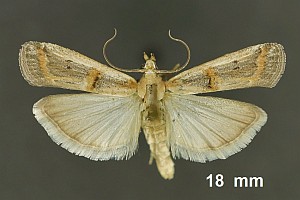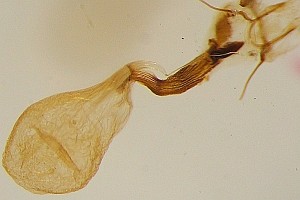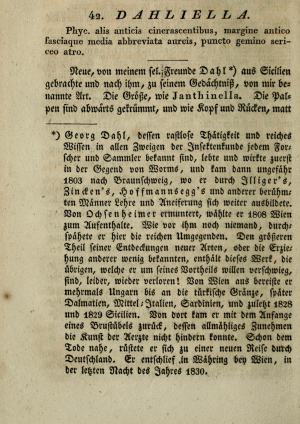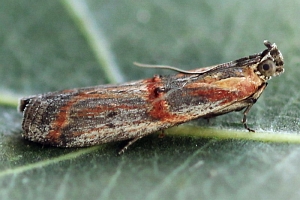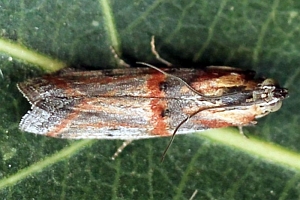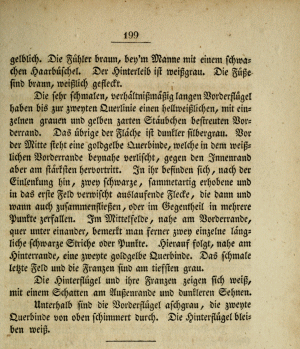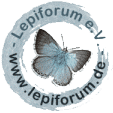

 +34Kontinente:EUASAF
+34Kontinente:EUASAF1. Falter
2. Diagnose
2.1. Männchen
2.2. Weibchen
2.3. Genitalien
2.3.1. Weibchen
2.4. Erstbeschreibung
2.5. Beschreibung als Psorosa flavifasciella
3. Biologie
3.1. Habitat
3.2. Nahrung der Raupe
Noch unbekannt!
4. Weitere Informationen
4.1. Etymologie (Namenserklärung)
Nach dem deutschen Entomologen Georg Dahl [Treitschke (1832: 198, Fussnote)].
4.2. Andere Kombinationen
- Phycis dahliella Treitschke, 1832 [Originalkombination]
4.3. Synonyme
- Phycis bivitella Duponchel, 1836
- Phycis bifasciata Duponchel, 1836
- Psorosa flavifasciella Hampson, 1901 [K+R-Nr. 05777]
4.4. Taxonomie
Leraut (2014) stellt Psorosa flavifasciella [K+R-Nr. 05777] ohne jegliche Begründung als "syn. nov." in die Synonymie von Psorosa dahliella. Slamka (2019: 73) akzeptiert das, schreibt dazu aber auch nur: "Psorosa flavifasciella Ragonot & Hampson, 1901 was synonymized with dahliella by Leraut (2014); it has a very broad ochreous post-medial line (band) on the forewings (type in coll. NHML)." So wie das klingt, hat er dieses Typusexemplar gesehen.
4.5. Faunistik
Locus typicus ist Sizilien. Die Art ist im Mediterran-Raum weit verbreitet.
Locus typicus des Synonyms P. flavifasciella ist Cintra (Portugal) - jenes Taxon wurde auch noch von Spanien genannt.
(Autor: Erwin Rennwald)
4.6. Literatur
- Leraut, P. (2014): Moths of Europe. Volume 4. Pyralids 2. - 441 S.; Verrières-le-Buisson (N.A.P Editions).
- Beschreibung als Psorosa flavifasciella: Ragonot, E. L. (1901): Monographie des Phycitinae et des Galleriinae. — Mémoires sur les Lépidoptères 8. I-XLI, 1-602, pl. XXIV-LVII. Saint-Pétersbourg.
- Erstbeschreibung: Treitschke, F. (1832): Die Schmetterlinge von Europa 9 (1): I-VIII, 1-272. Leipzig (Ernst Fleischer).


































